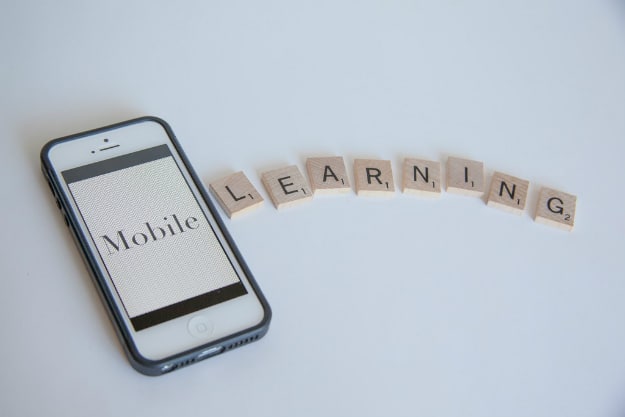A few decades ago, mobile technologies were still not too mobile. Proud owners had to be in a good shape to handle heavy and bulky gadgets, let alone the access to an electrical outlet. Since that time, technologies have been progressing incredibly far, especially during the last decade. The availability of all kinds of smartphones, tablets, and e-readers contributes to better quality of life, education and the way we are learning.
Let’s delve into the question of the impact of mobile on education and try to analyze the current benefits along with future opportunities.
Mobile Technologies As The Future Of Education
Nowadays students do everything on mobile devices. They have constant access to learning resources and take it for granted. Mobile learning has a double advantage: while the students are eager to use mobile access to information and educational systems, the technology can significantly improve and enrich teaching.
The capacity of the mobile network is sufficient for the implementation of desktop virtualization – a technology that supports mobile learning opportunities, providing students with remote access to applications from their smartphones and tablets.
The most obvious advantage of mobile learning is the ability to access to information if it is not available from other sources. For example, when a person is going down the street and needs to get any information or help in solving the problem.
The question arises: to what extent the modern society can use mobile technologies?
On average, every able-bodied citizen spends 15 hours a week on self-learning from mobile phones. The number is likely to increase as the life speeds up and people have to faster get access to information to increase the chances of employment, business success, self-fulfillment, and social development. Mobile learning enables constant access to information which previously was impossible. The relatively low cost of mobile devices and absence of any limits lead to lower training costs.
One can hardly undervalue the mobile learning. It involves new technologies in education, provides hassle-free integration into the learning process and countless opportunities for people with disabilities. Although it has also some problems, including the limited capacity of the batteries, the inability to accurately evaluate the results and support the learning process outside the lecture room, and some others, there’s no doubt that pros outweigh the cons.
The main mobile learning objectives can be considered to be:
- Connection at a convenient time and in any place that expands the possibilities of collaboration.
- Optimization of the use of mobile tools available to students.
- Compact storage of the material, which is always at hand.
- Intensification of the learning process.
- Compliance with the modern social order and interests of “mobile” students.
Mobile learning is now more relevant as never before. On the one hand, it has the appeal of a new product, on the other – it is convenient and feasible in practice. Most students are very grateful for this innovation.
Despite the fact that most schools do not welcome the use of mobile devices in the classroom, the benefits are obvious:
- Improving access to education due to the relatively low cost of mobile technologies.
- The opportunity to learn at a comfortable pace and confidentially, which may be impossible when using school computers or equipment belonging to other persons.
- Good support for the popular ways of interaction, such as mobile access to audio and social networks.
- Satisfaction of interests beyond the school programs by access to additional resources through podcasts or free training materials.
- Support of communication due to the ability to immediately share impressions of the educational process.
- Psychological support for students at risk through social networks or with the help of a personal mentor.
- Acquisition of essential skills and improving working methods, which leads to higher competitiveness in business and life.
According to research, students are more engaged and motivated when they are using mobile devices. Teachers should take note of this and look for safe and effective methods of integrating mobile devices into the learning process.
Mobile learning is an excellent opportunity for teachers, but in most cases, they use these opportunities very superficially, taking only a little of what they could use.
Can Mobile Technologies Completely Outperform Traditional Education?
In the future, perhaps, all kinds of educational materials will be mobile. I believe teachers will make a breakthrough soon and be able to support and guide the use of such devices on a regular basis.
As for now, it is possible to build mobile learning together in combination rather than apart from the existing teaching methods. Obviously, the emergence of a new way of delivering educational materials hadn’t fundamentally changed the existing methods. The mobile learning does add value, but it doesn’t replace the traditional education. Although mobile learning is already a great supplement and has the faster data throughput than ever before, I believe we can’t expect mobile technologies to completely replace the training under the guidance of a teacher or computer based training in the nearest future.
Many teachers use cloud technologies as a cost-effective way to deliver their courses to students. The purpose of the typical learning cloud is to provide teachers and students with a wide range of possibilities of conducting educational activity on the basis of cloud services without the need for additional hardware and software or the help of IT professionals. Teachers can create courses based on the e-learning module, conduct educational activities and exchange training courses and educational resources in electronic form with other users.
Experience shows that the use of mobile learning opportunities and modern cloud technology allows creating an environment for self-education as well as the productive interaction of all participants of the educational process.
The use of mobile learning is expanding, although the possible consequences of this spread are not yet clear to developers and researchers. This understanding is necessary for the research and study of the traditional learning environment. One can’t argue that the development of technologies will lead to an increase in mobile learning efficiency. However, the current task is to smoothly integrate mobile technologies into the traditional education, using the advantages to the fullest and minimizing the limitations and possible shortcomings.
Author Bio: Lucy Adams is a blogger and writer from BuzzEssay. The lady is a generalist, so she never has problems with covering a wide variety of topics. Lucy is an open-hearted person and is always in touch, so be sure, you’ll get a fast and grounded response. Take your chance and start a mutually beneficial collaboration right now!



COMMENTS